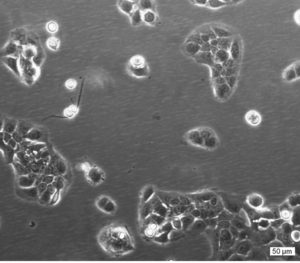Bladder cancer is the 9th most common cancer worldwide1, with transitional cell carcinoma (urothelial carcinoma) accounting for majority of cases1. The disease presents challenges such as high recurrence rates, progression to muscle-invasive disease2, and development of treatment resistance3. Bladder cancer’s molecular heterogeneity, and sex-based differences, necessitate a diverse range of bladder cancer models, to reflect this disease3.
Bladder Cancer
Introduction

For our commercial customers
Our dedicated licensing team can assist you in any of your commercial enquiries and help to guide you in identifying the right license for your needs. We support partners in the Pharma, Biotechnology and CRO/CDMO industries. Please contact us below:
References
- Zuiverloon et al. (2018). Bladder cancer (Amsterdam, Netherlands), 4(2), 169–183. PMID: 29732388
- Earl et al. (2015). BMC genomics, 16(1), 403. PMID: 2599754
- Tuo et al. (2024). Pharmacological research, 206, 107302. PMID: 39004242
- Domingos-Pereira et al. (2022). International journal of molecular sciences, 24(1), 123. PMID: 36613562
- Zuiverloon et al (2018). Bladder cancer, 4(2), 169–183. PMID: 29732388
- Vandeveer et al. (2016). Cancer immunology research, 4(5), 452–462. PMID: 26921031




